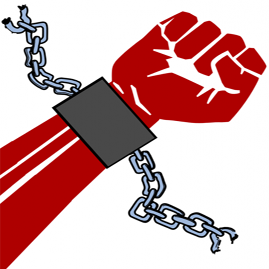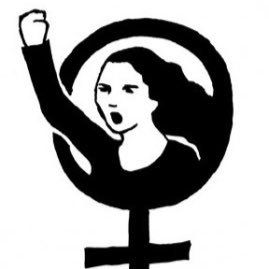| |
When one hurts or kills a women
one hurts or kills hummanity and is an antrocitie.
Gino d'Artali
and: My mother (1931-1997) always said to me <Mi
figlio, non esistono notizie <vecchie> perche puoi imparare qualcosa da
qualsiasi notizia.> Translated: <My son, there is no such thing as so
called 'old' news because you can learn something from any news.>
Gianna d'Artali
CLICK HERE ON HOW TO READ
ALL PARTS OF THIS SPECIAL
<The stench of death>
<Canada's indigenous murdered women and girls.>

Between 8 Nov 2021 and 17 Feb 2022 AL Jazeera published a serial of
articles about femicides of Canadian Indigenous women and girls of which each word is so
heartbreaking that it takes a lot of courage to read the whole serial. Still I challenge you to do so! I divided it according to the
number of articles and quoted from them ending with a read more URL. All
articles were written by Brandi Morin (1 to 9) except the last one
(10th.) written by an Al Jazeera team:
Related:
29 Dec 2021
<<'No one is going to believe you'
When the RCMP abuses Indigenous women and girls.
British Columbia, Canada - On a crisp February morning, on the edge of
the city of Terrace, plumes of smoke rise from the chimneys of a row of
tiny steel-roofed homes. From Gladys Radek’s kitchen window, the view is
of towering mountains skirted by a thick forest. A trickle of sunlight
pierces the low-lying clouds as if to tease winter with its warmth.
Gladys grips a cup of hot coffee and looks outside. <I get to see this
every day,> she gestures to the window and smiles. Her one-bedroom home
is about 20 feet long and 10 feet wide (about 6 metres by 3 metres). It
is run-down and cluttered, but to her, it is a place of peace in a life
that has been anything but tranquil. Indigenous artwork adorns her walls.
One - a striking painting depicting Highway 16 and an Indigenous woman
crying blood-red tears - was painted by Wade Raw Eater, a
Vancouver-based artist and former partner of Georgina Papin, a Cree
woman who was murdered by serial killer Robert Pickton sometime after
she disappeared in 1999. Indigenous music plays on a continual loop - a
steady beat of drums and melodic singing. Gladys keeps it on 24/7 so as
to be saturated by the sounds of her culture. It helps to keep her
driven, she says. And she must stay driven considering the mission she
has taken on - lives depend upon it. For almost two decades, Gladys has
lobbied governments and organised rallies and other events to bring
attention to the crisis of Missing and Murdered Indigenous Women and
Girls (MMIWG). The 65-year-old is a member of the Wet’suwet’en Nation
located about an hour’s drive north of Terrace. Not only is she a
leading advocate for MMIWG, but she is also a mother, a grandmother and
a survivor. <I managed to live to tell about it,> she says, explaining
that she relies on prayer to help her through the various abuses and
hardships she has endured.
<There’s a Creator up there who has answered my prayers ... but my story
is by far not unique because it’s happened to so many of us.>
'A house of evil'
When Gladys was five, she and her three siblings were taken from their
mother - victims of what is now known as the Sixties Scoop. During this
mass removal of Indigenous children from their families by the child
welfare system, thousands of Indigenous children from across Canada were
“scooped” up and placed into mostly white families where they were
displaced from their culture and often abused. After living with a
non-Indigenous family, who Gladys says treated her well, for a couple of
years, she was sent to live in Terrace with relatives. It was a house of
evil, she says, stopping to take a drag of her cigarette as her pet and
best friend, a border collie called Tess, walks to her side at the
kitchen table. Gladys pets Tess and continues. <There were lots of
beatings. I was raped every weekend.> Her foster parents were
residential school survivors. The notoriously abusive state and
Church-run schools often inflicted severe physical, sexual, emotional
and spiritual abuse on the Indigenous children who were forced to attend
them. Gladys says her foster parents never recovered. <A lot of our
people were damaged by residential schools. So, they took it out on us,>
she says, describing a perpetual cycle of addiction and violence. When
Gladys was a teenager, she started running away - eventually ending up
in a reform school for girls in Vancouver, more than 1,500km (932 miles)
south of Terrace. <I was labelled incorrigible,> she chuckles and shakes
her head in disapproval. <I hated it there, so I ran away.> When she was
16, she found solace on the streets of Vancouver’s notorious east side.
Soon she was drinking and gave up hope for a better life. <I just didn’t
care any more. At that point, I didn’t give a s*** what happened to me.
I was so angry,> she says.
With her indifference came a fearlessness and she says she would often
hitchhike to get around. She knew to play it cool when the Royal
Canadian Mounted Police (RCMP) flagged her down, because she was a young
runaway and they could be on the lookout for her. But she had also heard
rumours about police officers hurting Indigenous girls - offering to let
runaways go in exchange for sexual favours. It happened to Gladys -
twice. The first time was just outside the city of Chilliwack in British
Columbia’s southern interior. Gladys was trying to make her way to
Calgary, in the neighbouring province of Alberta, to visit friends. It
was a 1,000km (621 mile) journey and Gladys was walking along the
highway when, at about 11.30pm, a police car pulled up beside her. The
officer began questioning her. <He told me I looked like a girl that was
wanted. He mentioned my name and I denied it,> Gladys recalls,
explaining that she had a fake ID. The officer told her to get in the
back seat of his cruiser, that she was not supposed to be hitchhiking.
He drove down the highway. Gladys thought he was taking her to jail.
But then he pulled off onto a side road.
<He turned around and got into the back of the car and he raped me …
we’re talking about an 80-pound [36kg] girl; I wasn’t even a woman yet.
There was nothing I could do,” she says. There is a look of sadness in
her eyes and then anger - but the emotions quickly fade. Talking about
the trauma she has endured is routine and she says it <toughened her up>,
but she has cried many tears of healing over the years.>>
Read the whole article here:
https://www.aljazeera.com/features/longform/2021/12/29/no-one-will-believe-you-when-the-rcmp-abuses-indigenous-girls
5 Jan 2022
<'If she was white, she would still be here'
Canada's murdered women and girls.>
<<British Columbia, Canada - Brenda Wilson has dedicated the past 27
years of her life to supporting the families of Missing and Murdered
Indigenous Women and Girls (MMIWG). It is emotionally draining, but it
has become her life’s purpose. It all started when her younger sister
was found dead. Ramona Wilson was Gitxsan First Nation and just 16 years
old. She went missing in Smithers, northern British Columbia, on June
11, 1994, after telling her mother that she was going out with a friend
and might attend some local graduation parties that evening. The next
day, when her family discovered that she hadn’t shown up to meet her
friend and her boyfriend called looking for her, they felt something was
terribly wrong. They went to the Royal Canadian Mounted Police (RCMP),
but the RCMP didn’t seem to share their concern. <The RCMP didn’t help,
I don’t recall them searching,> says Brenda, on a frigidly cold and
dreary day in Prince George, the largest city in northern British
Columbia. <We put up posters and had lots of friends and family out
searching,> she recalls. But Brenda didn’t join the search. She didn’t
want to find her sister’s body, she explains. <I kept thinking she was
kidnapped, held captive, she could be beaten. Was she hungry or cold? I
was praying she was ok.> Brenda is dressed from head to toe in red, a
colour that represents MMIWG, and wears a black mask with a red
handprint. She has brought several framed photos of her sister to the
local hotel where we are meeting. They show a fair-skinned young girl
with dark, almond-shaped eyes, high cheekbones and long black hair. <The
night before we found her, I had a dream,> she nods, as her finger
slowly traces circles on the large, wooden table in the hotel boardroom.
<I knew,> she says. Ramona had been missing for 10 months, but that
night, in Brenda’s dream, Ramona’s voice <kept saying, ‘they found me’.>
The next day, Brenda was visiting a relative when she got the call. <I
hate the phone and cell phones now,> she says, taking a deep breath and
quietly studying a picture of her sister. Two teenagers had discovered
Ramona’s body in a wooded area near Smither’s airport and just a few
metres away from Highway 16, a notorious stretch of road that has become
known as the Highway of Tears because of the high number of mostly
Indigenous women and girls who have gone missing or been found murdered
along it.
Yellow rope and nylon cables were found beside her. The trousers and
sweatshirt she had been wearing were nearby, but her white and pink high
top sneakers were never located. In the time between Ramona going
missing and her body being found, the bodies of two other girls were
discovered near Highway 16. Roxane Thiara and Alishia Germaine were both
15 years old. Six months after Ramona was found, 19-year-old Lana
Derrick, a forestry college student visiting her mother in Terrace,
vanished. According to the RCMP, she was last seen at a gas station on
Highway 16. She has never been found. All three were Indigenous.>>
Read more here:
https://www.aljazeera.com/features/longform/2022/1/5/if-she-was-white-she-would-still-be-here-canadas-mmiwg
|


